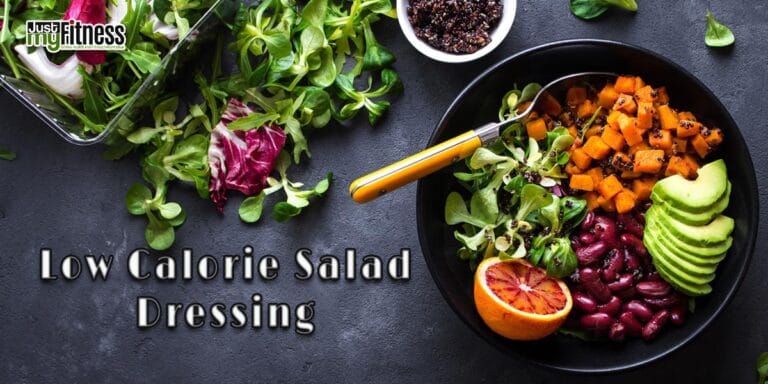Salad is a staple of any healthy diet, providing an abundance of vitamins, minerals, and fiber in a low calorie package. However, many prefer to avoid salads or limit portions due to calorie concerns over high-fat dressings. Many delicious low-calorie options are on the market, allowing dieters to enjoy generous salad portions without fear of sabotage.
This comprehensive guide explores the benefits of low calorie salad dressings and the variety of available tasty choices. We’ll examine the science behind creating full flavors with minimal calories and how innovative formulations satisfy tastebuds without excess fat or sugar. Real-world examples will illustrate how Low Calorie Salad Dressing supports weight loss and lifestyle changes. Overall, the goal is to empower readers to select condiments that enhance rather than undermine wellness efforts confidently.
Low Calorie Salad Dressing
For this article, a low calorie salad dressing contains no more than 50 calories per standard 2-tablespoon serving size. This calorie threshold allows liberal use of dressings without exceeding daily limits set by leading health authorities and dieting plans. Many famous brands have developed varieties meeting this criterion through careful recipe refinement.
Beyond calories, low calorie salad Dressing also contains minimal saturated fat and sodium. Most aim to provide 3g or less fat and 150mg or less sodium per serving. Some even offer vegan, gluten-free or keto-friendly options depending on individual needs. These formulations emphasize natural flavors over fat and sugar to create a big taste with minimal sacrifice.
The Science Behind Low Calorie Formulations
Creating full flavors with few calories requires a nuanced understanding of food science. Emulsifiers, thickeners, acidulants, extracts and spices are carefully balanced to coat tastebuds in rich, complex sensations without relying on excess fat or sugar as carriers. Let’s explore some essential techniques:
Acid: Vinegar, citrus, and other acids provide bright, tangy notes to balance flavors with minimal calories. Their piquant qualities are satisfied at low volumes.
Herbs/Spices: Pungent herbs and warm spices like garlic, onion, mustard, and red pepper intensify flavors through aromatic compounds rather than calories. A little goes a long way.
Emulsifiers: Lecithin and other emulsifiers create creamy mouthfeels that fool tastebuds into perceiving more fat and richness than present.
Texture: Gums, starches and fibers thicken dressings without excess fat or sugar to provide satisfying texture. Air incorporation lends lightness.
Extracts/Essences: Natural extracts of ingredients like olive, shallot or roasted garlic concentrate robust flavors requiring minimal overall volume.
Through innovative formulation leveraging food science principles, dietitians and chefs craft intensely satisfying dressings under 50 calories, allowing dieters to enjoy their salads liberally.
Variety of Low Calorie Options

Thanks to growing demand, supermarkets are overflowing with Calorie Salad Dressing choices to suit every palate. Here are some popular varieties:
- Balsamic Vinaigrette: A classic combination of balsamic vinegar, olive oil, and Dijon mustard creates a bold yet balanced flavor in 30-50 calories.
- Ranch: Cult-favorite ranch dressings now come in low-fat versions of around 45 calories using buttermilk, herbs, and spices instead of heavy cream.
- Caesar: Creamy Caesar dressings leverage emulsifiers to deliver rich egg and Parmesan flavors for 50 calories or less.
- Asian Sesame Ginger: Nutty sesame, spicy ginger, and rice vinegar infuse freshness and flavor without excess oil.
- Italian: Robust garlic and herb profiles satisfy in red wine vinaigrettes and oil-free versions under 50 calories.
- Green Goddess: Herbaceous blends of parsley, tarragon, and chives soothe tastebuds with only 30 calories.
- Honey Mustard: Spicy-sweet honey mustard dressings provide bold zing in 45 calories or less.
- Avocado Ranch: Creamy avocado adds richness to ranch for 60 calories or less.
- Lemon Tahini: Nutty tahini balanced by bright lemon offers Mediterranean flair.
Uses of Low-Calorie Salad Dressing
Salad Enhancement: Low-calorie dressings infuse fresh greens and veggies with moisture and zest without excess calories. Their vibrant flavors satisfy tastebuds seeking more than “plain” salads.
Weight Management: By choosing low calorie dressings, dieters can enjoy generous salad portions as filling meals or snacks without fear of sabotage. Each calorie saved adds up significantly over time.
Overall Health: Nutritious salad ingredients like leafy greens become even more nutritious and appealing when paired with low-calorie dressings. This encourages regular salad consumption and a balanced diet.
Benefits of Low Calorie Salad Dressing
Beyond flavor, low-calorie dressings provide immense practical and psychological benefits supporting weight loss efforts:
Portion Freedom: Dieters can use dressings liberally at 50 calories or less without fear of excess. This prevents abandoning salads or under-dressing.
Satisfying Volumes: Flavor-packed dressings satisfy large portions, keeping dieters full for fewer calories than alternatives.
Diet Compliance: With liberal use encouraged, low-calorie dressings support long-term lifestyle changes versus restrictive “diet” products.
Variety: Different flavors energize routine salads, preventing boredom or temptation from abandoning healthy routines.
Convenience: Ready-made options eliminate time spent making higher-calorie dressings from scratch.
Affordability: Low calorie salad Dressing offers excellent value versus specialty “diet” items that undermine goals.
Social Support: Sharing favorite low-calorie dressings makes healthy eating sustainable in social settings.
Overall, low calorie dressings empower lasting lifestyle transformations by allowing dieters to enjoy salad without limits or guilt. Their widespread availability makes healthy choices convenient and affordable.
Real-World Impact of Low-Calorie Dressings

To demonstrate real impact, we’ll explore examples of individuals successfully using Low-Calorie Salad Dressing to meet weight loss goals:
Sara lost 60 pounds in a year by focusing on daily generous salad portions for lunch. Rotating Low-Calorie Salad Dressings like balsamic vinaigrette and Asian sesame ginger prevented boredom. She said, “Dressings kept salads satisfying, so I never felt deprived.”
Alex struggled with portion control until discovering Bolthouse Farms’ classic ranch dressing with only 45 calories per 2 Tbsp. Now, he enjoys large salad meals without anxiety. “It’s my go-to for lunch every day,” he said.
Melissa credits low-calorie Caesar and green goddess dressings with helping her lose 25 pounds in 6 months. “I never felt restricted using them liberally. Salads became my new favorite food!”
For Jordan, low-calorie Italian and honey mustard dressings supported keto weight loss. “Being able to enjoy big salad portions kept me satisfied within my macros,” she noted.
These examples illustrate how low calorie dressings empower lasting lifestyle changes by allowing generous portions that satisfy appetite and tastebuds. Their widespread availability makes healthy choices practical and sustainable.
Making the Most of Low Calorie Dressings
To conclude, here are some final tips for maximizing the benefits of Low Calorie Salad Dressing:
- Experiment regularly to prevent boredom and cravings.
- Store in refrigerator for freshness. Shake or whisk before each use.
- Use a light hand at first to taste flavors before adding more.
- Dress salads just before eating to prevent sogginess.
- Enjoy dressings on other veggies like roasted Brussels sprouts.
- Share favorite brands with family and friends for social support.
- Consider making large batches to portion and enjoy throughout the week.
- Track dressing calories alongside other foods for accurate intake awareness.
In summary, low calorie salad dressings empower lasting lifestyle transformations by allowing generous, satisfying portions that support appetite and tastebuds. Their widespread availability makes healthy choices practical and sustainable as part of a balanced diet.


